Spanish Paella Chicken, Chorizo And Seafood
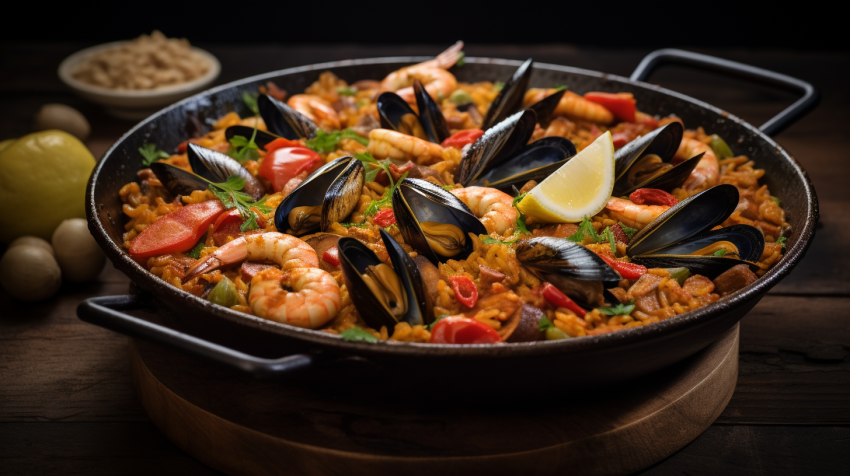
A Taste of Valencia: The Cultural Story of Spanish Paella
Paella isn’t just Spain’s most famous culinary export—it’s a vibrant celebration of its culture and traditions, particularly those of the Valencia region, where this beloved dish has its roots. Originating in the mid-19th century, paella began as a humble meal for laborers, cooked over an open fire in the fields and eaten directly from the pan. What began with simple, available ingredients like snails and rabbit has evolved into a sophisticated dish that is enjoyed worldwide.
The Essence of Authentic Paella
The heart of authentic paella lies in a few key ingredients, with saffron being the most crucial. This expensive spice not only imparts a distinct flavor but also gives the dish its characteristic golden color. The choice of rice is also vital; short-grain varieties like Bomba or Calasparra are preferred for their ability to soak up flavors without becoming mushy. Another hallmark of an authentic paella is the ‘socarrat’—a layer of toasted rice at the bottom of the pan. Achieving the perfect socarrat is a skill that defines the expertise of the paella cook, adding a crispy contrast to the tender and moist textures above.
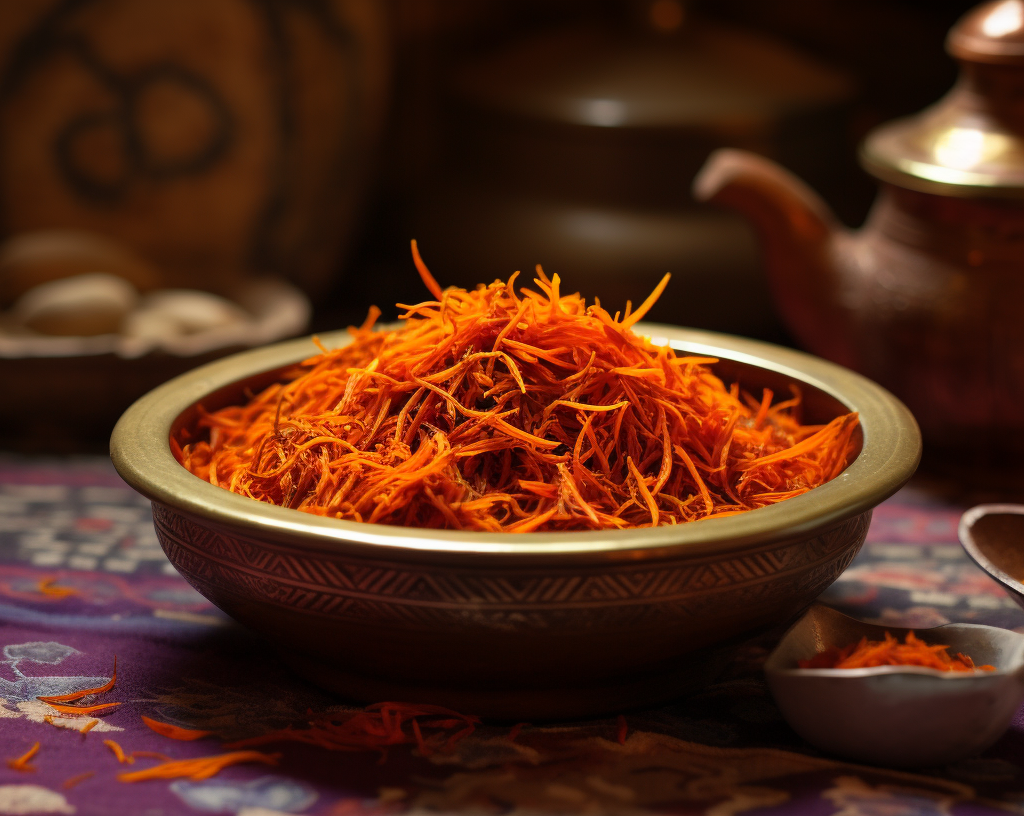
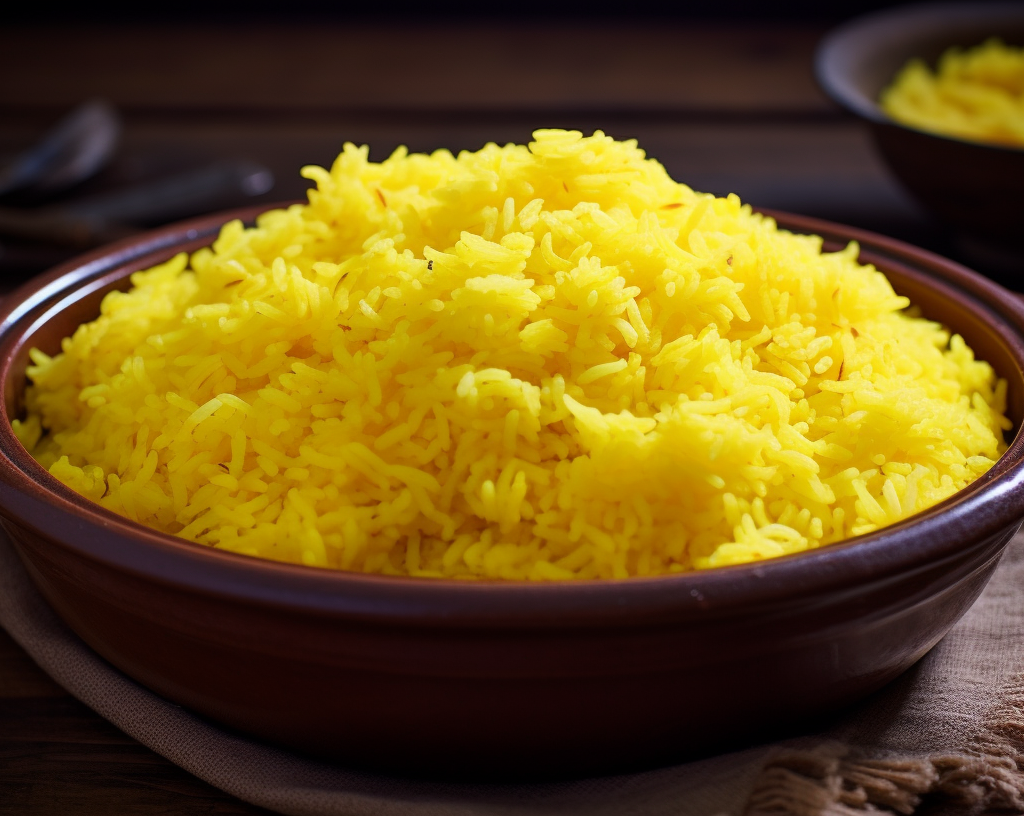
Paella: A Social Ritual
Traditionally, paella is more than a One Pot dish; it’s a social ritual. It is common in Spanish culture to share the meal directly from the pan, emphasizing communal values and the collective enjoyment of food. This tradition of eating together from a single pan speaks volumes about the communal nature of Spanish life and the importance of food in bringing people together.
Regional Variations and Modern Adaptations
While seafood paella might be the most well-known version internationally, the traditional Valencian paella is often made with chicken, rabbit, and sometimes snails, reflecting the local produce and tastes. Every region of Spain has its twist on the dish, adapting the base recipe to what’s locally available. This adaptability of paella has allowed it to remain a beloved staple in the Spanish diet, while also gaining popularity across different cultures and cuisines around the world.
Celebrating Tradition Through Food
Making paella is an act of celebration—a way to bring a piece of Spanish tradition into your home. It’s an invitation to explore the rich flavors and communal spirit of Spanish cuisine. Each ingredient added to the pan carries a piece of history, each stir a centuries-old practice. As you delve into the layers of flavors, you also partake in a legacy that has been passed down through generations.
Paella serves as a reminder of how food is more than sustenance; it’s a cultural artifact, a means of gathering, and a form of expression. As you enjoy the rich, savory flavors of a well-made paella, you’re not just feeding your body, but also nourishing your soul with the warmth and joy that only a shared meal can bring.
So, let the vibrant tastes of Spain transform your dining table with a dish that’s as rich in culture as it is in flavor. Gather your loved ones, share stories over steaming spoonfuls, and enjoy the culinary journey. ¡Buen provecho!
Delicious One-Pan Spanish Paella with Chicken, Mussels, Chorizo and Shrimp
Course: DinnerCuisine: SpanishDifficulty: moderate6
servings20
minutes40
minutes420
kcal10
minutes425
grams27.7
grams1
hour10
minutesTaste the rich flavors of Spain with this authentic Spanish Paella recipe! Perfectly combining saffron-infused rice, tender chicken, spicy chorizo, and fresh shrimp, this one-pan wonder is vibrant and bursting with flavor. Packed with colorful vegetables and seasoned with smoked paprika, this traditional dish is not only a feast for the eyes but also a delight for the palate. Ideal for a festive gathering or a cozy family dinner, each serving is a hearty and satisfying experience. Follow this simple guide to bring a taste of Spanish cuisine right into your own kitchen!
Ingredients
2 tbsp olive oil
1 onion, finely chopped
2 cloves garlic, minced
1 red bell pepper, sliced
2 tomatoes, diced
1 cup short-grain paella rice (e.g., Bomba or Calasparra)
3 cups chicken broth
1 pinch saffron threads
1/2 tsp smoked paprika
1/2 tsp salt
1/4 tsp ground black pepper
1 cup frozen peas
8 oz chicken thighs, cut into pieces
4 oz chorizo sausage, sliced
8 oz shrimp, peeled and deveined
12 oz mussels, cleaned and debearded
1/2 cup flat-leaf parsley, chopped
1 lemon, cut into wedges for serving
Instructions
- Prepare the Ingredients:
Heat the olive oil in a large skillet or paella pan over medium heat.
Add the chopped onion and minced garlic, sauté until onion is soft.
Add the sliced bell pepper and diced tomatoes, cook until the tomatoes break down.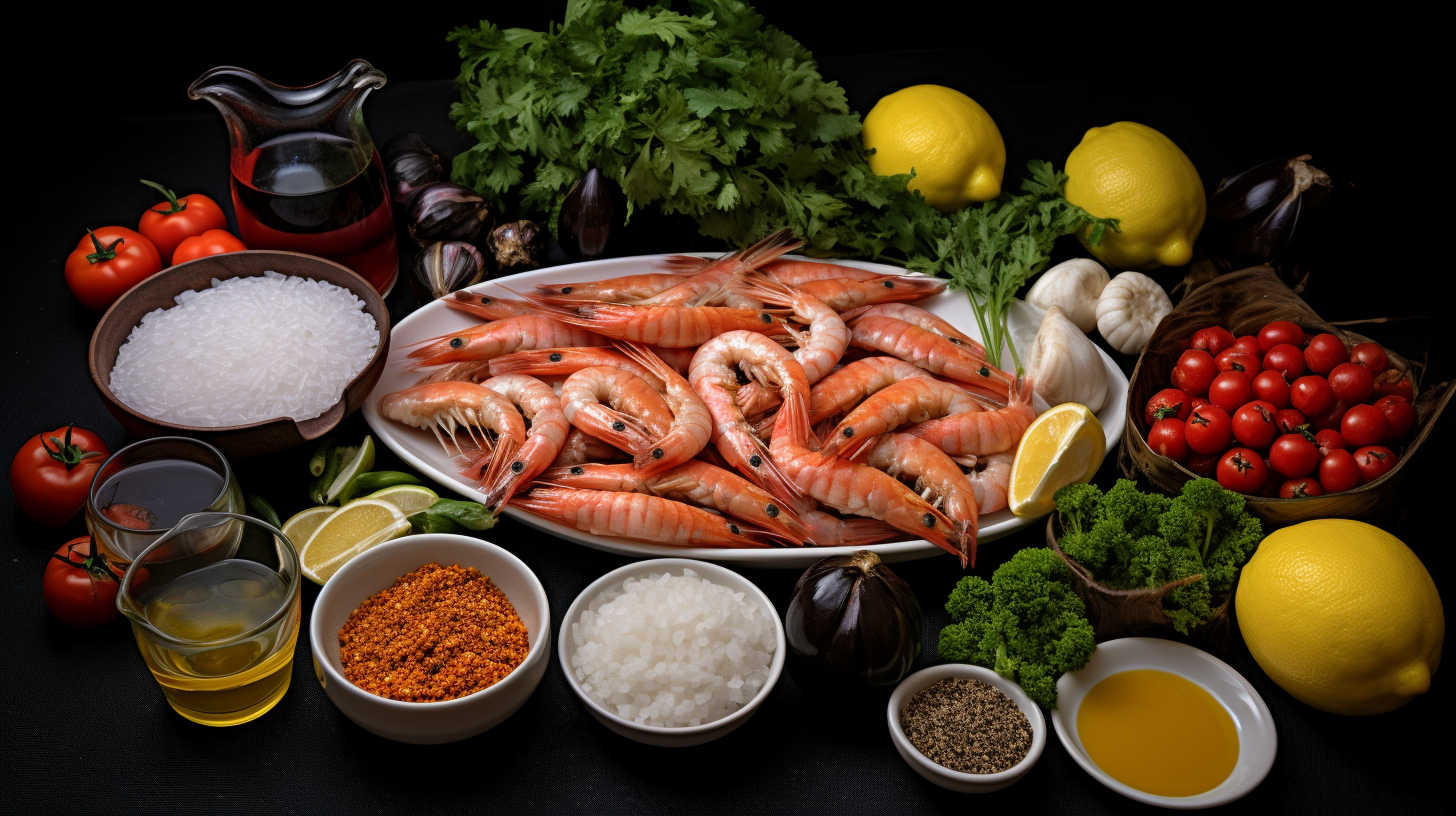
- Cook the Meat:
Add the chicken and chorizo to the pan, sauté until the chicken is browned. - Add Rice and Seasonings:
Stir in the rice, saffron, smoked paprika, salt, and pepper. Mix well to combine and coat the rice in the oil and flavors. - Simmer:
Pour in the chicken broth and bring the mixture to a boil. Reduce heat to a low simmer and cook without stirring until the rice absorbs the liquid (about 15-20 minutes). - Add Seafood, Peas and Mussels:
Place the shrimp, peas, and mussels (hinge side down) evenly over the rice. Cook without stirring, until the shrimp is pink and the mussels have opened (about 8-10 minutes). Discard any mussels that do not open.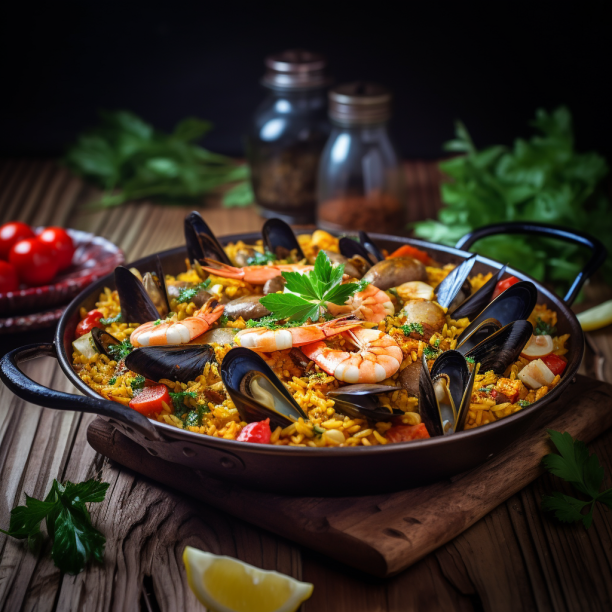
- Rest:
Remove from heat and cover with a lid or foil. Let sit for 10 minutes. - Garnish and Serve:
Garnish with chopped parsley and lemon wedges. Serve hot.
Key Notes
- Rice Selection: Choosing the right type of rice is crucial. Bomba or Calasparra rice are traditional choices because they absorb a lot of liquid without becoming mushy.
- Saffron Quality: Use high-quality saffron for the best flavor and color; it’s a key ingredient in achieving the authentic taste and vibrant appearance of paella.
- Even Heat Distribution: Cook the paella in a wide, flat pan to ensure even heat distribution, allowing the rice to cook uniformly. A traditional paella pan is recommended.
- Do Not Stir: Once you’ve added the rice and liquid to the pan, do not stir it. This helps to develop the ‘socarrat’ – a caramelized crust of rice at the bottom of the pan that’s highly prized in a good paella.
- Seafood Preparation: Make sure all seafood is cleaned and prepped properly. For mussels, remove beards and discard any that are open and do not close when tapped.
- Broth Flavoring: The flavor of the broth can make or break your paella. Use homemade or high-quality store-bought chicken broth, and consider adding a bit of fish stock if you want a deeper seafood flavor.
- Layering Ingredients: Add ingredients in stages to ensure everything cooks properly. Meats usually go in first to brown and develop flavor, followed by the sofrito (vegetables and seasoning), then rice, and finally seafood.
- Resting Time: Allow the paella to rest covered off the heat for about 10 minutes after cooking. This helps the flavors to meld and the rice to finish absorbing any residual liquid.
Adding in the Chicken: In the Spanish Paella recipe, you should add the chicken raw. Here’s how it fits into the cooking process:
Brown the Chicken: Start by sautéing the raw chicken pieces in olive oil in the paella pan or large skillet. This step not only cooks the chicken but also adds a rich flavor to the oil, which infuses the entire dish as you continue cooking the other ingredients.
Continue Cooking: After browning, the chicken continues to cook along with the sofrito (the sautéed onions, garlic, and peppers), and later, as the broth and rice simmer. This ensures the chicken is thoroughly cooked by the time the paella is done.
Adding the chicken raw and browning it initially helps develop deep flavors in the paella, crucial for an authentic taste.
Nutrition Facts
6 servings per container
Serving Size500g
Calories420
- Amount Per Serving% Daily Value *
- Total Fat
16g
25%
- Saturated Fat 5g 25%
- Cholesterol 140mg 47%
- Sodium 970mg 41%
- Amount Per Serving% Daily Value *
- Potassium 475mg 14%
- Total Carbohydrate
42g
15%
- Dietary Fiber 4g 16%
- Sugars 5g
- Protein 28g 57%
- Calcium 115%
- Iron 3.5%
- Magnesium 47%
- Zinc 3%
- Selenium 25%
* The % Daily Value tells you how much a nutrient in a serving of food contributes to a daily diet. 2,000 calories a day is used for general nutrition advice.
Tools (needed) for this recipe:
*Highlighted are Amazon affiliate links. As an Amazon Associate I earn from qualifying purchases.
- Traditional Paella Pan: (Paellera) 13 inch/34 cm, 6 servings
- Traditional Paella Pan: (Paellera) 17 inch/42 cm, 10 servings. A traditional, wide, shallow, flat-bottomed pan designed specifically for making paella. It ensures even heat distribution and allows the rice to cook in a thin layer, which is key for creating the socarrat (the crispy bottom layer of rice).
- Wooden Spoon: Useful for sautéing the ingredients as well as for stirring in the rice and distributing the broth
- Wooden Ladle: Needed for adding the broth to the rice evenly across the pan
- Sharp Knife: Essential for chopping vegetables, slicing chorizo, and cutting chicken into pieces.
- Cutting Board: To prepare all your ingredients safely and keep them organized.
- Measuring Cups and Spoons: For accurately measuring ingredients such as rice, spices, and broth to ensure the balance of flavors is just right.
- Tongs: Helpful for placing and turning the seafood and arranging it in the pan.
- Aluminum Foil or Lid: While traditional paella is often left uncovered, some recipes might call for covering the pan for a few minutes to help cook the seafood or to let the dish rest after cooking.




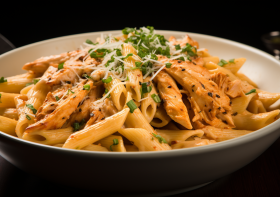
Leave a Reply